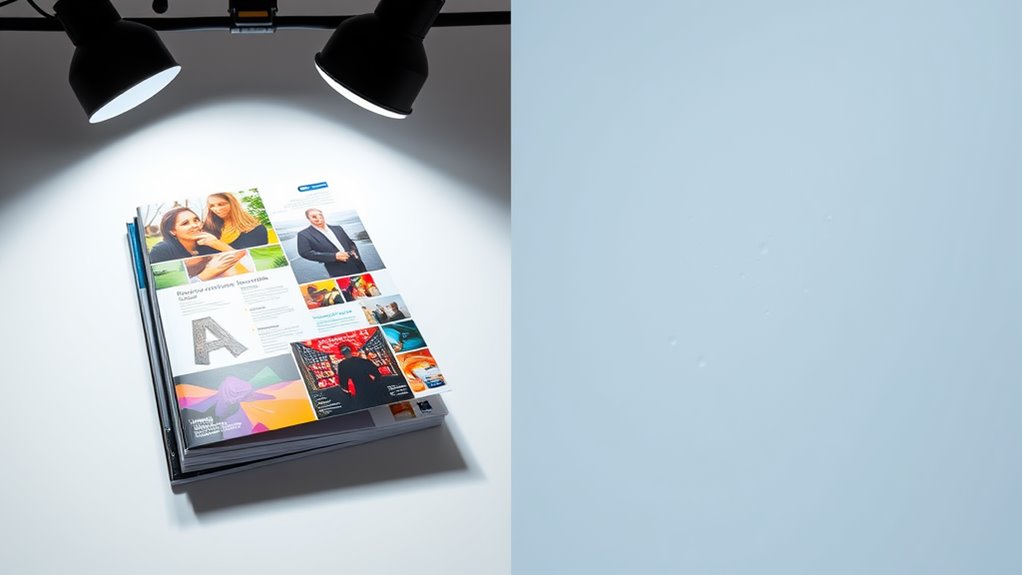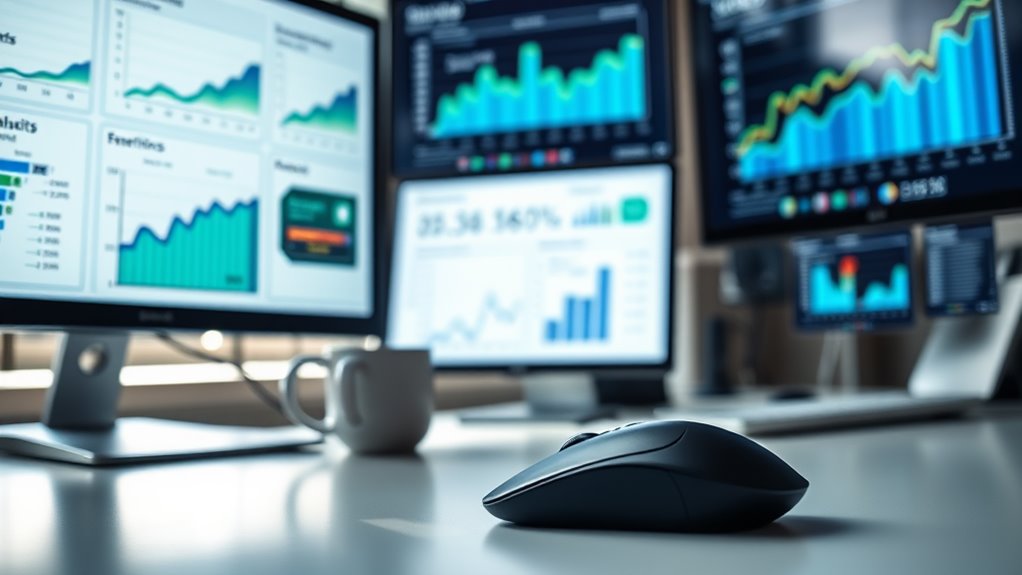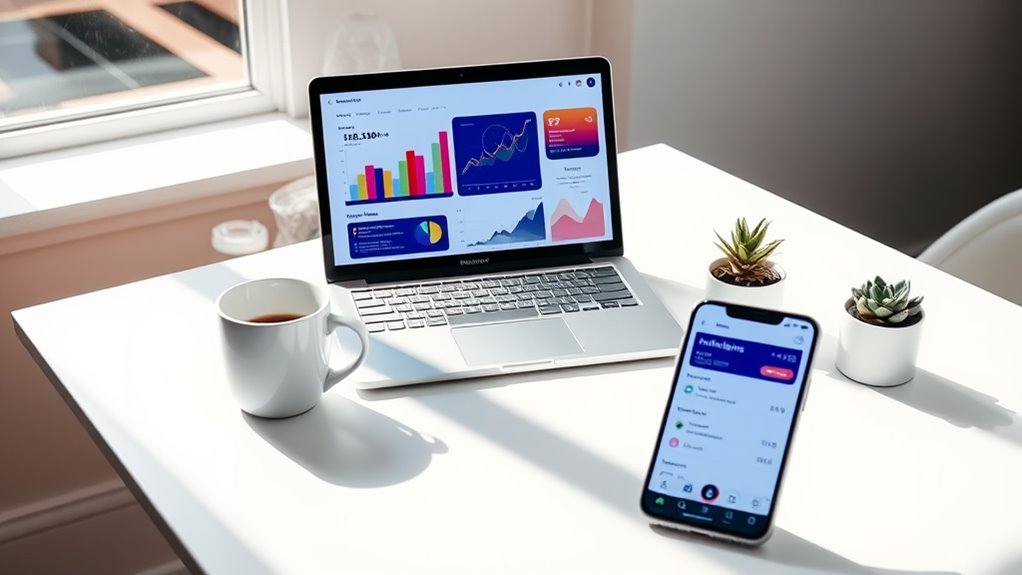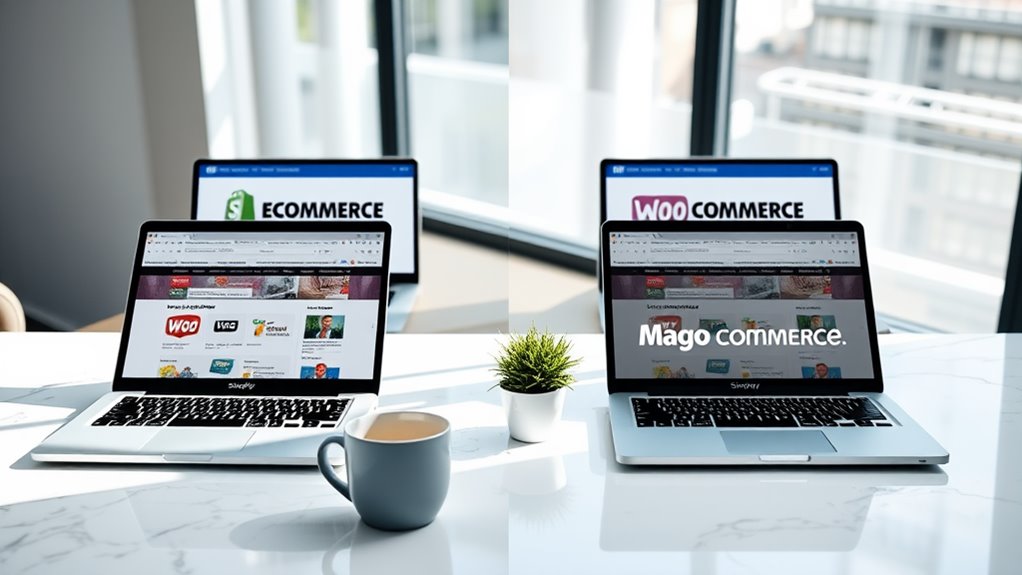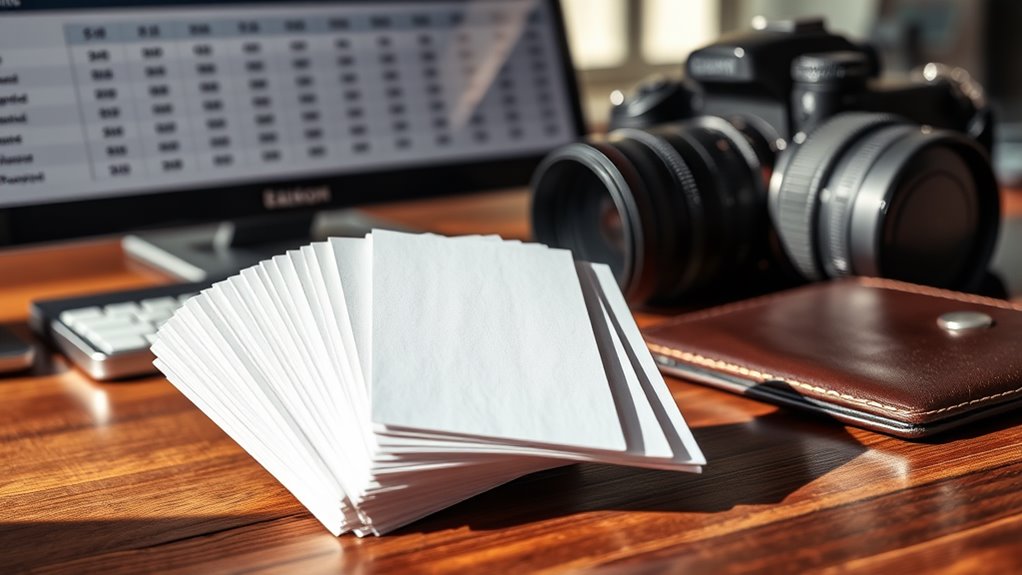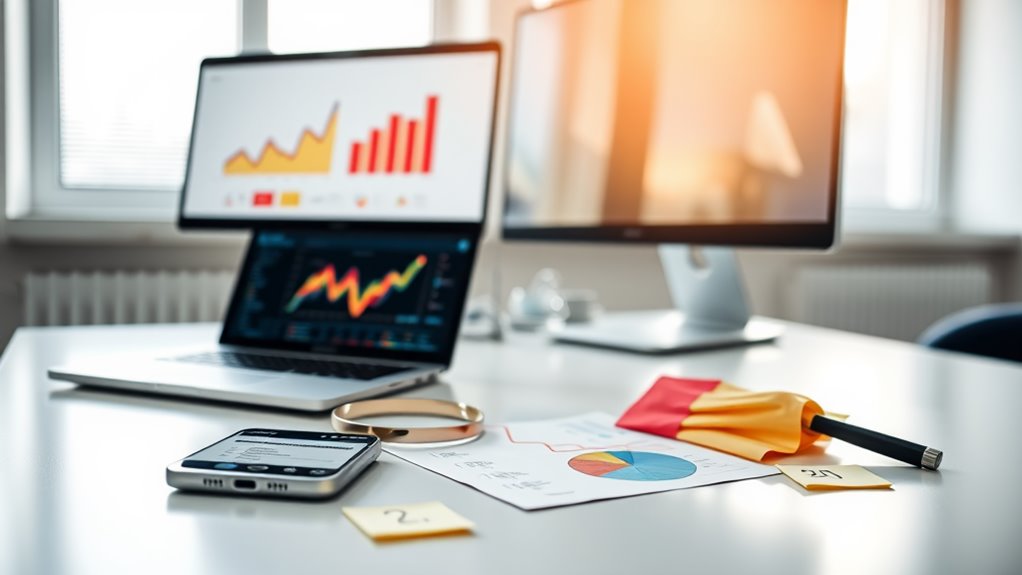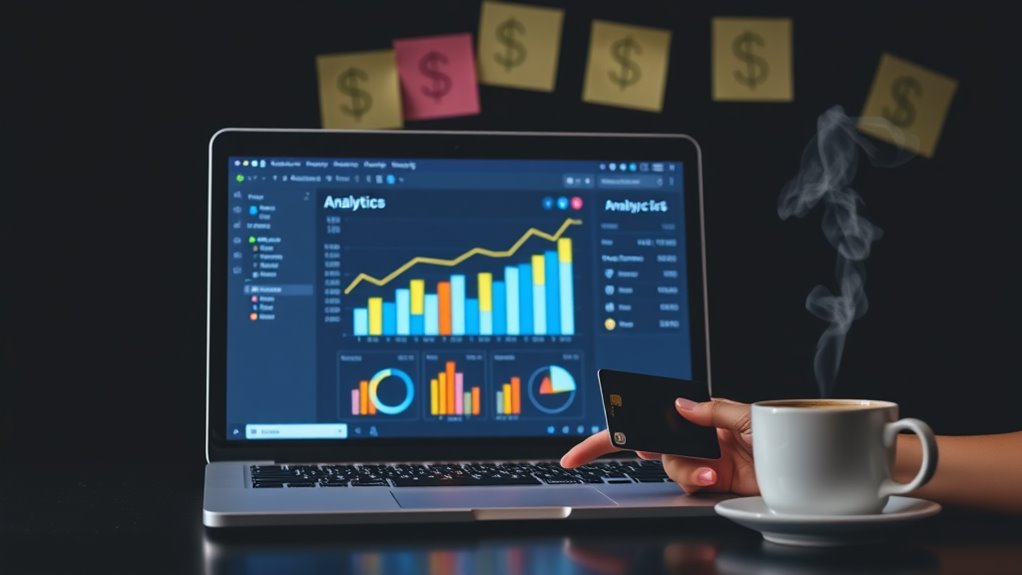The choice between offset and digital printing depends on your specific commercial needs. Offset printing excels at high-volume projects (over 500 units) with superior image quality at 2400+ DPI, while digital printing is ideal for smaller runs with quick 24-48 hour turnarounds. You'll find offset printing more cost-effective for large quantities ($0.05-0.30 per unit after setup) and better color matching, but digital offers advantages like variable data capabilities and lower setup costs ($50-200). Your project's timeline, budget, and quality requirements will guide your decision between these two proven methods. Understanding the key differences will help you make the most strategic choice for your business.
Key Takeaway
- Digital printing is better for runs under 500 pieces, quick turnarounds (24-48 hours), and variable data projects requiring personalization.
- Offset printing delivers superior quality with 2400+ DPI resolution and is more cost-effective for runs exceeding 1,000 pieces.
- Digital printing has lower setup costs ($50-200) compared to offset ($200-700), making it ideal for small businesses and startups.
- Offset printing offers more substrate options and larger format capabilities, perfect for specialized commercial printing needs.
- Project timeline determines choice: digital for urgent 1-2 day turnarounds, offset for longer 5-7 day projects requiring premium quality.
Understanding Offset Printing Basics
Quality and precision define offset printing, a widely-used commercial printing method that transfers ink from metal plates to rubber blankets before applying it to paper. You'll find this technique accounts for over 40% of all commercial printing jobs, making it essential to understand its core mechanics.
Key Components of Offset Printing:
- Plates: You'll need aluminum plates with photosensitive coatings that carry your image
- Blankets: Rubber cylinders that receive ink from the plates
- Ink rollers: Systems that maintain consistent ink distribution
- Water dampening system: Controls ink adhesion
How It Works for You:
When you're ready to print, the process follows these steps:
- Your design transfers to aluminum plates
- Water applies to non-image areas
- Ink adheres only to image areas
- The inked image transfers to rubber blankets
- Paper passes through, receiving the final image
Benefits You'll Experience:
- Superior image quality at 2400+ DPI
- Cost-effective for runs over 500 pieces
- Consistent color reproduction
- Versatility with paper types and sizes
You'll find offset printing particularly valuable when you need high-volume projects with exceptional quality and color accuracy.
Digital Printing Fundamentals
While offset printing dominates large-scale commercial jobs, digital printing has revolutionized short-run and on-demand projects. You'll find that digital printing uses advanced electronic imaging technology to transfer images directly from digital files to various media, eliminating the need for printing plates.
Key Advantages You'll Experience:
- Quick turnaround times, typically 24-48 hours
- Variable data capabilities for personalization
- Cost-effective for runs under 500 pieces
- Print-on-demand flexibility
- Consistent color quality throughout the run
Understanding Digital Print Applications:
You can leverage digital printing for multiple projects, including:
- Marketing materials and brochures
- Business cards and stationery
- Direct mail campaigns
- Short-run books and manuals
- Promotional materials
When you're considering digital printing, you'll want to note that most systems use either laser or inkjet technology. Your laser-based options utilize toner particles, while inkjet systems spray microscopic ink droplets onto the substrate. You'll find that modern digital presses can handle various paper stocks and specialty materials, though they're typically limited to standard sizes up to 13" x 19" for most commercial machines.
Cost Comparison Analysis
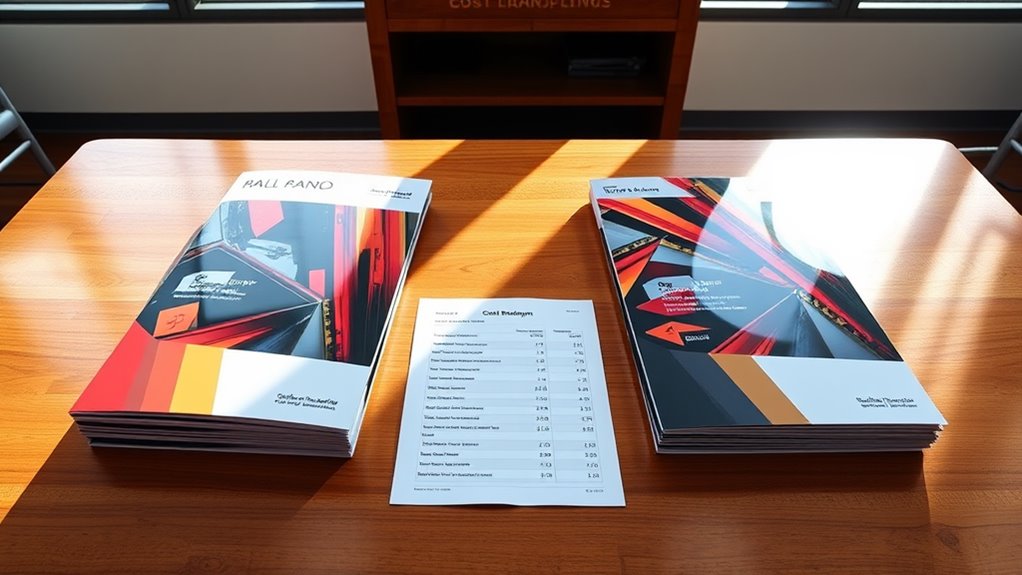
A thorough cost analysis between digital and offset printing reveals distinct break-even points that'll impact your project decisions. When you're comparing costs, you'll need to take into account both fixed and variable expenses for each method.
Key Cost Factors to Take into Account:
- Setup Costs
- Digital: $50-200 per project
- Offset: $200-700 per project
- Per-Unit Pricing
- Digital: $0.20-0.75 per piece
- Offset: $0.05-0.30 per piece after setup
Break-Even Analysis:
You'll typically find digital printing more cost-effective for runs under 500 pieces, while offset becomes economical beyond 1,000 units. Between these quantities, you'll need to evaluate additional factors.
Variables Affecting Your Decision:
- Turnaround Requirements
- Digital offers quick delivery for rush jobs
- Offset requires longer lead times but costs less per unit
- Quality Needs
- Digital works well for variable data and short runs
- Offset provides superior color consistency for large quantities
- Material Selection
- Digital printing supports fewer substrate options
- Offset accommodates a wider range of papers and materials
Take into account these factors when calculating your total cost of ownership, as hidden expenses can greatly influence your bottom line.
Print Quality and Resolution
Modern commercial printing offers two distinct resolution profiles between digital and offset methods. You'll find that digital printing typically achieves resolutions between 600-1200 dpi, while offset printing can reach up to 2400 dpi or higher.
Key Resolution Comparisons:
- Digital Printing
- Standard resolution: 600-1200 dpi
- Photo quality: Up to 2400 x 1200 dpi
- Variable data capability
- Consistent color matching
- Offset Printing
- Standard resolution: 2400+ dpi
- Line screen: 150-300 lpi
- Sharper details and smoother gradients
- Superior halftone reproduction
When you're choosing between the two methods, consider your specific needs. While offset printing delivers exceptional clarity for large format pieces and detailed images, digital printing has greatly improved its resolution capabilities. You'll notice that digital technology now matches offset quality in many applications, particularly for standard business materials like brochures and postcards.
For projects requiring precise color matching or intricate details, you should note that offset's higher resolution still maintains an edge, especially when printing below 12-point text or complex patterns.
Production Time and Turnaround
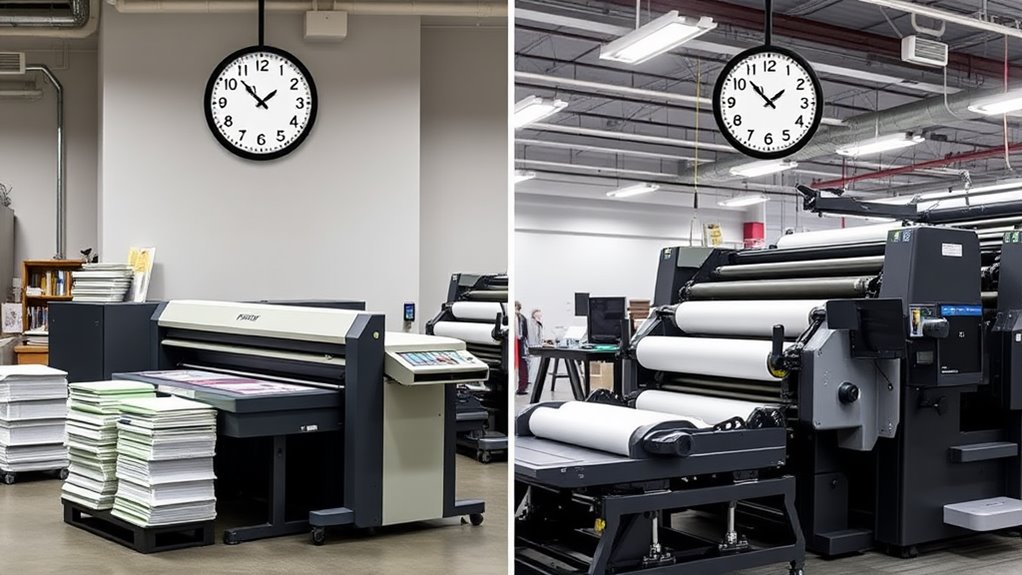
Production time and turnaround speeds vary greatly between commercial printing methods, with digital printing offering the fastest delivery options. You'll typically receive digital print jobs within 24-48 hours, while offset printing can take 5-7 business days or longer.
Key Turnaround Factors:
- Print volume: Large runs need more time, especially with offset methods
- Job complexity: Multi-color or specialty finishes add 1-3 days
- Pre-press setup: Digital requires minimal setup, while offset needs plate creation
- Binding and finishing: Post-print processing adds 24-72 hours
To optimize your production timeline:
- Submit print-ready files in the correct format
- Choose rush services when available (typically 25-50% cost premium)
- Plan for seasonal fluctuations in printer capacity
- Consider split runs between digital and offset for mixed quantities
Your printing method choice greatly impacts delivery schedules. If you're working with tight deadlines, you'll want to opt for digital printing, which eliminates plate setup and offers quick proofing cycles. For projects requiring longer runs or specialty materials, you'll need to factor in additional production time with traditional offset methods.
Project Size and Quantity
Determining project size and quantity sets the foundation for choosing the right commercial printing method. You'll need to evaluate both your immediate needs and potential scaling requirements when making this decision.
Print Volume Categories:
- Small runs: 25-500 units
- Medium runs: 501-5,000 units
- Large runs: 5,000+ units
For small runs, you'll find digital printing offers the most cost-effective solution, with setup costs averaging $50-200. When you're planning medium-sized projects, you'll want to compare both digital and offset options, as the break-even point typically occurs around 500-750 units.
Key Considerations:
- Storage requirements and inventory management
- Unit cost variation across different quantities
- Minimum order requirements
- Scalability options
You'll save 30-40% per unit when ordering larger quantities through offset printing, but you'll need to weigh this against storage costs. A practical approach is to calculate your three-month usage requirements and add 20% for unexpected demand. This strategy helps you maintain efficiency while avoiding excess inventory that could become outdated or damaged during storage.
Conclusion
For your commercial printing needs, you'll find that both offset and digital printing offer unique advantages, much like choosing between a trusty typewriter and a modern laptop. Your decision should ultimately rest on three key factors: your budget, quantity requirements, and timeline. While digital printing excels for smaller, quick-turnaround jobs, offset printing remains your best choice for large-volume projects where consistent quality and cost-effectiveness are paramount.

